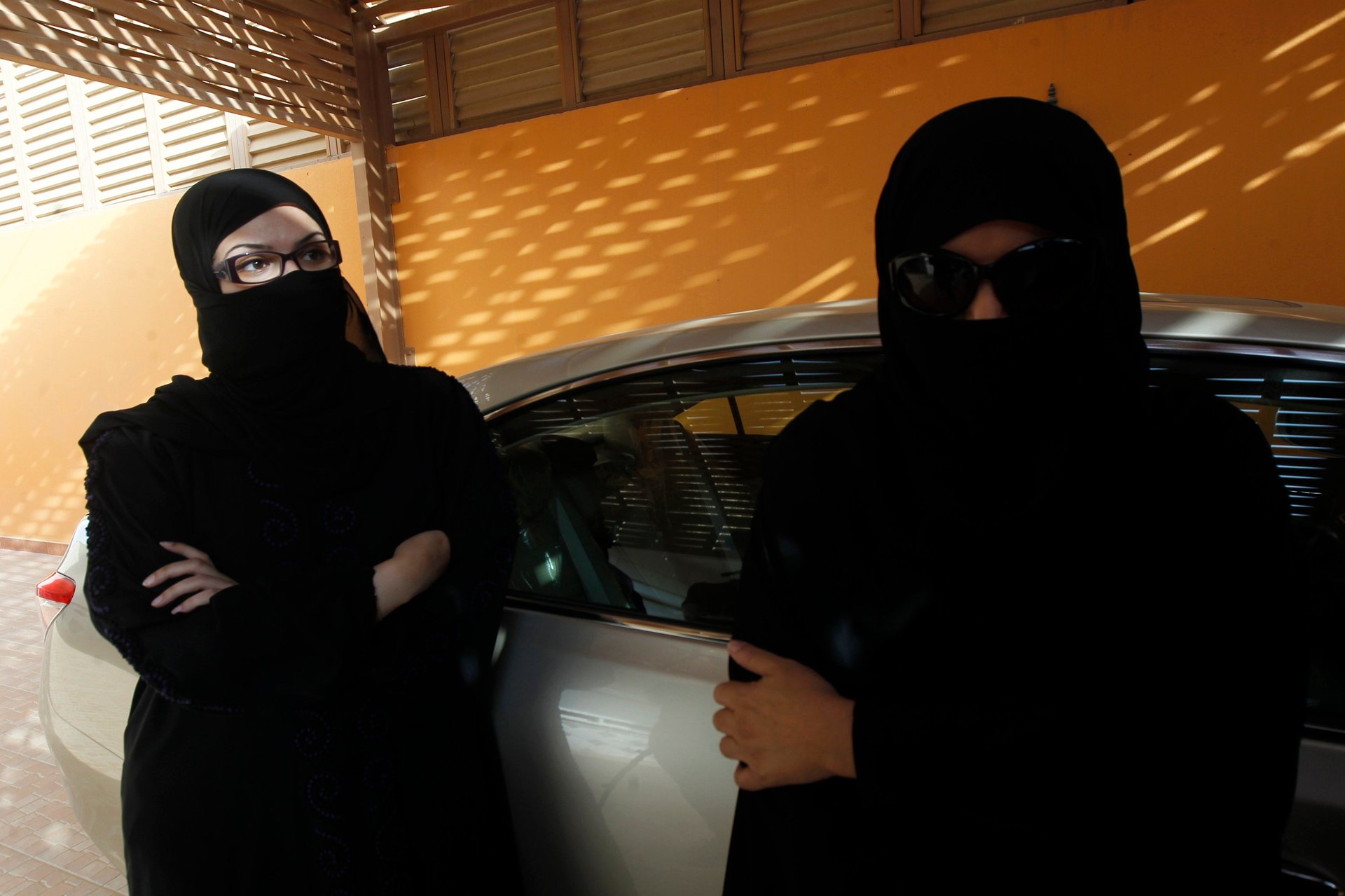The lifting of the ban on women driving caps a pretty good month for Saudi feminists
Saudi Arabia on Tuesday (Oct. 26) issued a royal decree allowing women to obtain driving licenses and to drive alone, lifting the only ban in the world on women driving.


Saudi Arabia on Tuesday (Oct. 26) issued a royal decree allowing women to obtain driving licenses and to drive alone, lifting the only ban in the world on women driving.
The historic decision caps a good month for Saudi feminists, who sometimes face criticism for excessive moderation in opposing aspects of the particularly austere version of Islam that the Saudi kingdom practices. The royal decree on driving wouldn’t have happened without sustained Saudi female defiance. Over the decades, many Saudi women have protested the ban:
- In 1990, 47 women, several of them professors, got together in a convoy and drove in Riyadh, the Saudi capital. Some of them were fired from their government jobs as a result.
- In 2011, activist and cybersecurity consultant Manal al-Sharif, then 32, was detained (paywall) for twice driving publicly, which she highlighted on Twitter and Facebook.
- In 2013, about 40 women (paywall) also publicly defied the ban.
- In 2014, Loujain al-Hathloul, 25, was arrested when she tried to drive into Saudi Arabia from neighboring United Arab Emirates, and was detained again earlier this year. Her journalist friend Maysaa al-Amoudi was also detained after going to the border to meet her.
On Twitter, women and men congratulated one another and sent shout outs to the women who had drawn internal and global attention to the ban across the years.
Some among the younger activists tweeted a list of the names of the 1990 drivers.
Others noted how many days were left until women could get behind the wheel legally.
There are many reasons for lifting the ban. The Saudi royal family is trying to reinvent the economy and find employment for its young population as oil prices have dropped and the world moves toward adopting renewable energy. Women—who in 2015 by a small margin made up the majority at the country’s universities—are part of those efforts. But the driving ban made it hard for women to work.
Furthermore, stop-gap measures like the Middle Eastern ride-hailing company Careem or Uber, which Saudi Arabia has invested $3.5 billion in, are expensive for many women. The culture minister said the decision was “within the wise vision of Saudi leadership for women to take their proper place and participate in development in accordance with Shari’a regulations.”
In 2015, Saudi women were allowed to vote and run for local elections for the first time. The lifting of the driving ban came just days after Saudi women were allowed to enter a sports stadium to celebrate the country’s national day, along with the easing of restrictions in their access to other public spaces.
Yet the changes also come as Saudi Arabia clamps down on dissent in other ways as the new crown prince consolidates power (paywall). Mohammed bin Salman had said as recently as April 2016 that the kingdom was not yet ready to let women drive. The reform of the country’s economy, however, is a signature effort for him.
The next stop for Saudi women? The country has been reviewing the hated male guardianship system—which controls every aspect of a woman’s life from marrying to leaving the country—and appears to have ordered the relaxation of some aspects of it. Saudi feminists, naturally, are campaigning for much, much more.